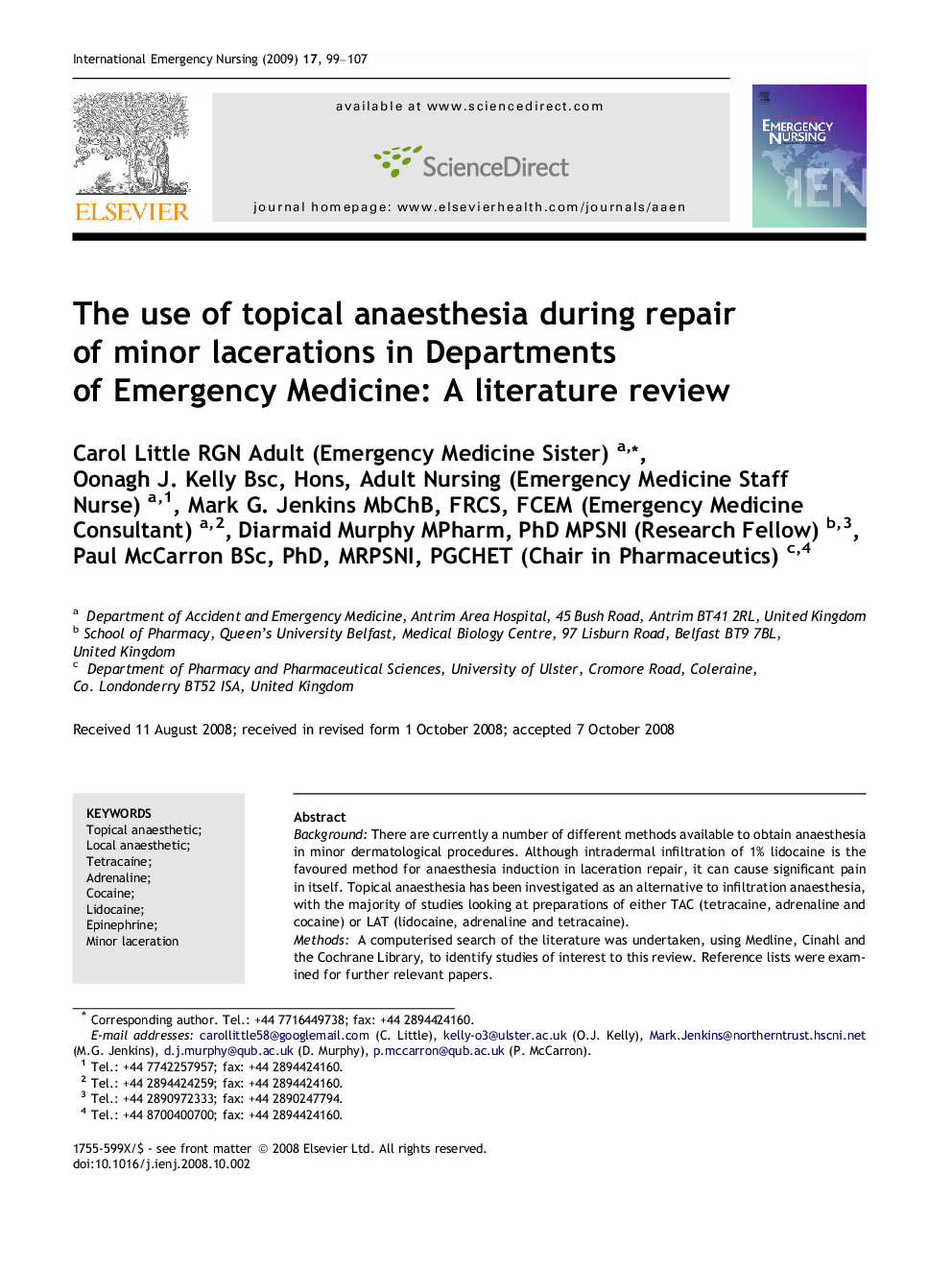| Article ID | Journal | Published Year | Pages | File Type |
|---|---|---|---|---|
| 2608320 | International Emergency Nursing | 2009 | 9 Pages |
BackgroundThere are currently a number of different methods available to obtain anaesthesia in minor dermatological procedures. Although intradermal infiltration of 1% lidocaine is the favoured method for anaesthesia induction in laceration repair, it can cause significant pain in itself. Topical anaesthesia has been investigated as an alternative to infiltration anaesthesia, with the majority of studies looking at preparations of either TAC (tetracaine, adrenaline and cocaine) or LAT (lidocaine, adrenaline and tetracaine).MethodsA computerised search of the literature was undertaken, using Medline, Cinahl and the Cochrane Library, to identify studies of interest to this review. Reference lists were examined for further relevant papers.AimsThis paper aims to provide an overview of the use of topical anaesthetics, in laceration repair, in Emergency Medicine (EM) departments.ConclusionThe literature has shown that the induction of anaesthesia in lacerations has remained largely unchanged over the past few years, with lidocaine infiltration still the preferred method. Many reasons have been put forward as to why topical anaesthetics are not commonly used in the UK. Perhaps it would be beneficial to carry out work in relation to alternative formulations as opposed to overcoming the difficulties associated with formulations that are already available.
